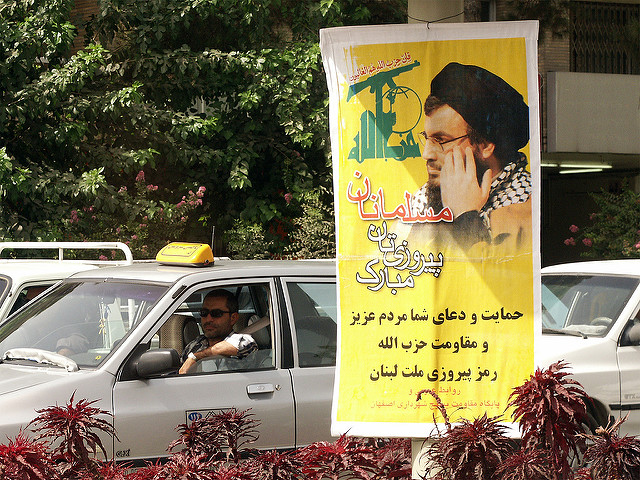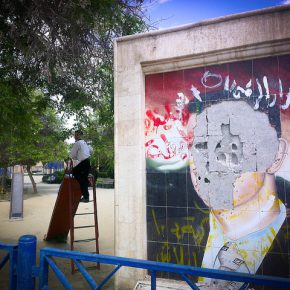In 2004, King Abdullah of Jordan warned that a “Shia Crescent” of Iranian-led movements and governments would begin to dominate the northern Middle East. His predictions were quickly echoed by regional leaders, from Egypt’s Hosni Mubarak to defensive Persian Gulf monarchs, and an American security establishment overly focused on Tehran’s influence in a number of regional capitals.
King Abdullah was oversimplifying the situation but expressed a common opinion among the US and its allies. Shia Muslims are threats to whatever Sunni government presides over them, and their primary allegiances are either to Iran or one of its “proxies.” Although the monarch was speaking in the context of the conflict in Iraq, the concern goes back decades, to the 1979 Islamic Revolution.
Originally, it was Iranian political unrest that provoked sectarian uneasiness, and partly as part of an overall strategy for dealing with the problem. Yet scrutinising Shias has numerous benefits, and allow for regional elites to solidify their authority by rallying their populations against the minority, playing to the concerns of American neoconservatives, while slashing the appeal of Islamist radicalism.
Iranian influence and the importance of sectarianism have been wildly overstated in the Middle East. This is not to say that Iran does not wield any power, or that Shia identity is unimportant. Obviously, in Iraq, Tehran genuinely has been wielding more power over the past fifteen years, and often in support of Shia Islamist factions. Yet Iraq is a special case, owing to how failed American policies since the 2003 invasion led to a situation where its neighbours now have an unprecedented ability to pursue their own interests within its borders.
Iran’s success in Iraq should not be taken to mean that it has a unique pull over all Shia Muslims in the region. It has simply cultivated ties with specific factions in the context of broader military intervention, at the same time that other local powers like Saudi Arabia and Turkey have made their own geopolitical moves.
Iranian state behaviour has probably been most exaggerated in Bahrain, where an embattled royal family, in conjunction with allies across the Persian Gulf, has continued to dismiss pro-democracy protests by accusing Tehran of fermenting unrest and terrorism among its majority Shia population. The claims are light on evidence, and only believable if one thinks that Bahraini Shias are a monolithic bloc, rather than a diverse population with often conflicting political goals.
During the Arab Spring, Shia protesters allied with both secular and religious factions had different opinions of the US Navy’s Fifth Fleet being stationed in the country, and frequently did not agree on whether the monarchy should be abolished, or Bahrain should transition to a constitutional kingship. Even the armed militants are diverse, with a variety of objectives and views on how best to confront the current regime.
Yet rather than engaging with this diversity, and issues of corruption and multiple forms of marginalisation that have disproportionately affected Shias, Manama has crudely insisted that Iran is to blame. The result has been that the Sunni monarchy has survived widespread uprisings, but at the cost of normalising toxic sectarian rhetoric, and a growing foreign security presence by the Gulf Cooperation Council.
Bahrain is a useful example because of how its government avoided engaging with legitimate political demands by casting its own population as puppets of a foreign regime. As armed militias have become more common in the country, following the shortcomings of the Arab Spring, Manama has also taken advantage of anxieties about Hezbollah in Lebanon to argue that Iran is directing the groups. The exiled Yemeni government has made the same argument about the Houthis, with its GCC allies going further to claim that Iran is trying to gain a foothold on the Arabian Peninsula.
While it is true that Iran could be supporting at least one of these groups (and obviously is in alliance with Hezbollah), the idea that Tehran simply commands them misunderstands how Shia-identified militant groups relate to the country. Even Hezbollah is more than just a client of Tehran. Take, for example, its deepening relationship with Moscow, independent of Russia’s historic ally, Iran. It’s real. Rather, these groups have their own objectives, some of which are actually made more difficult with Iranian assistance, and are wholly indigenous to the societies in which they operate.
There are obvious benefits to this approach. Firstly, it nurtures an aggressive Sunni nationalism, which makes it very easy to divide, and then manage, the general population. While cultivating sectarianism can easily backfire, it is worth the risk for an embattled and discredited government. Elites are also able to count on military and diplomatic assistance from Washington, by reframing issues like democratic representation as being part of an international showdown with Iran.
Furthermore, the US and its allies get the chance to ignore the consequences of their own actions, by criticising Iran. This strategy has been very effective in Iraq, and also Lebanon, where Hezbollah originally formed in response to Israel’s 1982 invasion. And yet Iran continues to be disproportionately criticised for negatively affecting the country, and using the organisation solely as a proxy against Israel.
Finally, and perhaps most importantly, widespread suspicion of Shias and Iranian ambitions has meant that Iran’s Islamic Revolution has been safely contained for decades. After the overthrow of the Shah in 1979, countries like Saudi Arabia were terrified of its potent mixture of religious and anti-monarchical rhetoric. The Gulf monarchies remain quite vulnerable to a deeply conservative Iranian-style revolutionary Islamism.
Kingdoms like those of Saudi Arabia, and Bahrain, both of which also have important Shia minorities, have been able to prevent additional Islamic revolutions partly because they constantly emphasise the ‘Shia-ness’ of its central ideas. As a result, their largely Sunni populations are largely insulated from the potentially radicalising effects of a successful revolutionary Islamic Republican model.
It is likely that ideas like King Abdullah’s Shia Crescent are here to stay, and will occasionally be updated in respect to new events. Recently, Henry Kissinger warned of an “Iranian radical empire,” which is a new way of discussing the same political anxiety. Yet it is not enough to say that the simplicity of these statements obscures how events are evolving on the ground.
The focus on Shia Muslims is exaggerated in order to satisfy particular needs that elites have in the Middle East when it comes to holding onto power, cracking down on democratic movements, and keeping the United States on their side. The process is likely to intensify in the years ahead, as governments that survived the Arab Spring fight to regain their lost stability and try to placate their restive populations.
Photograph courtesy of Giorgio Montersino. Published under a Creative Commons License.





